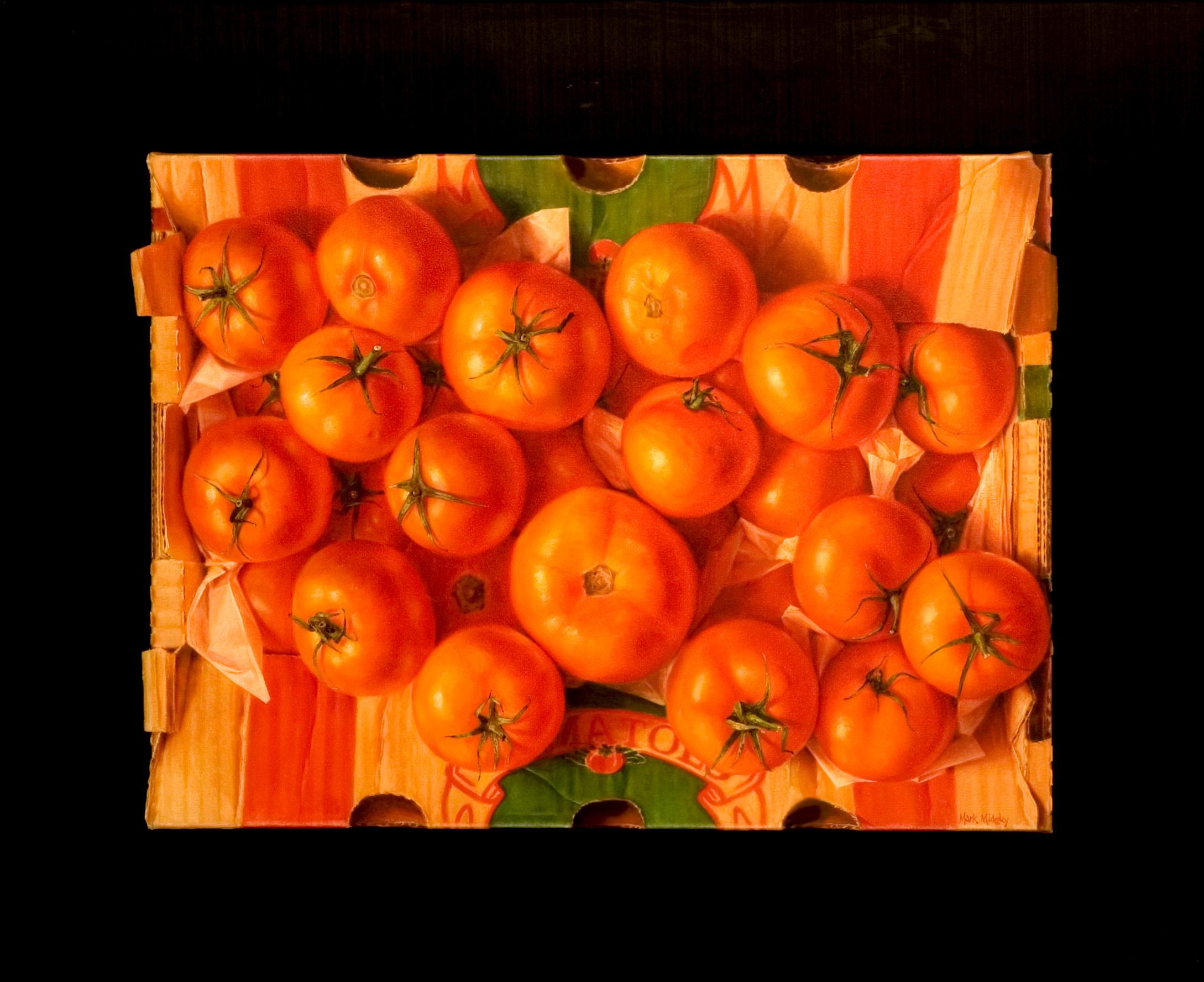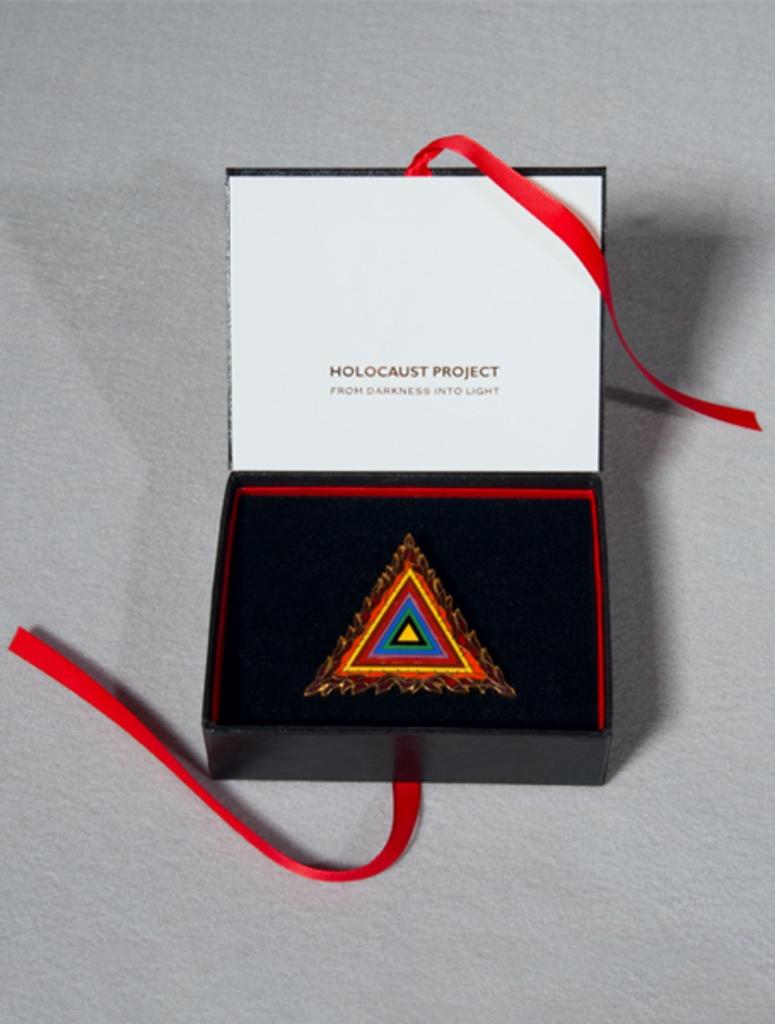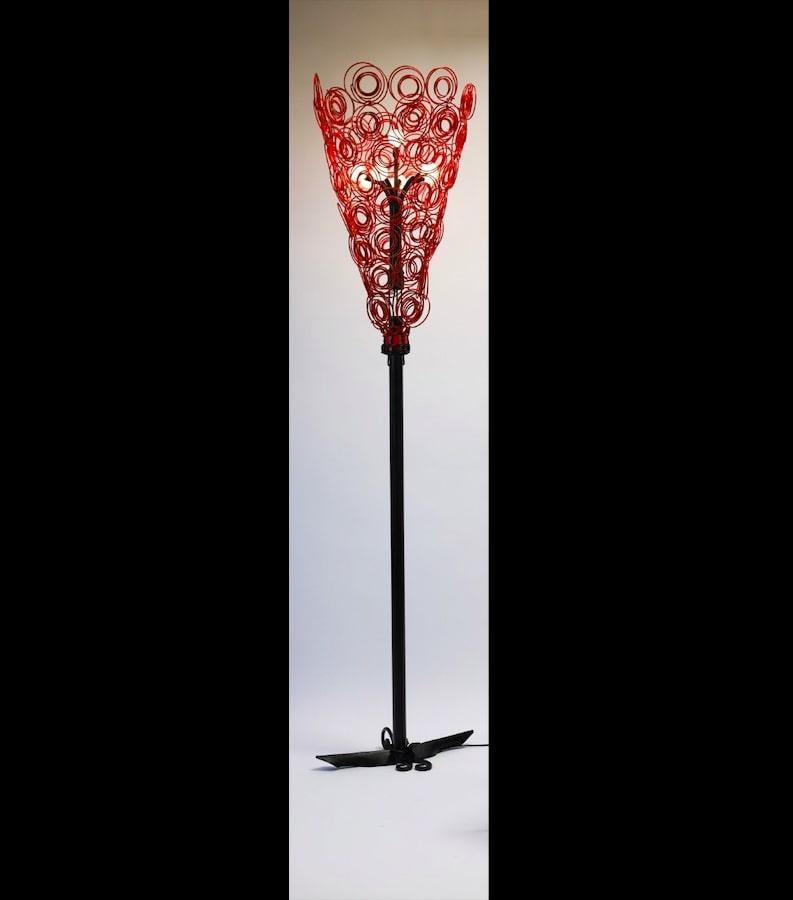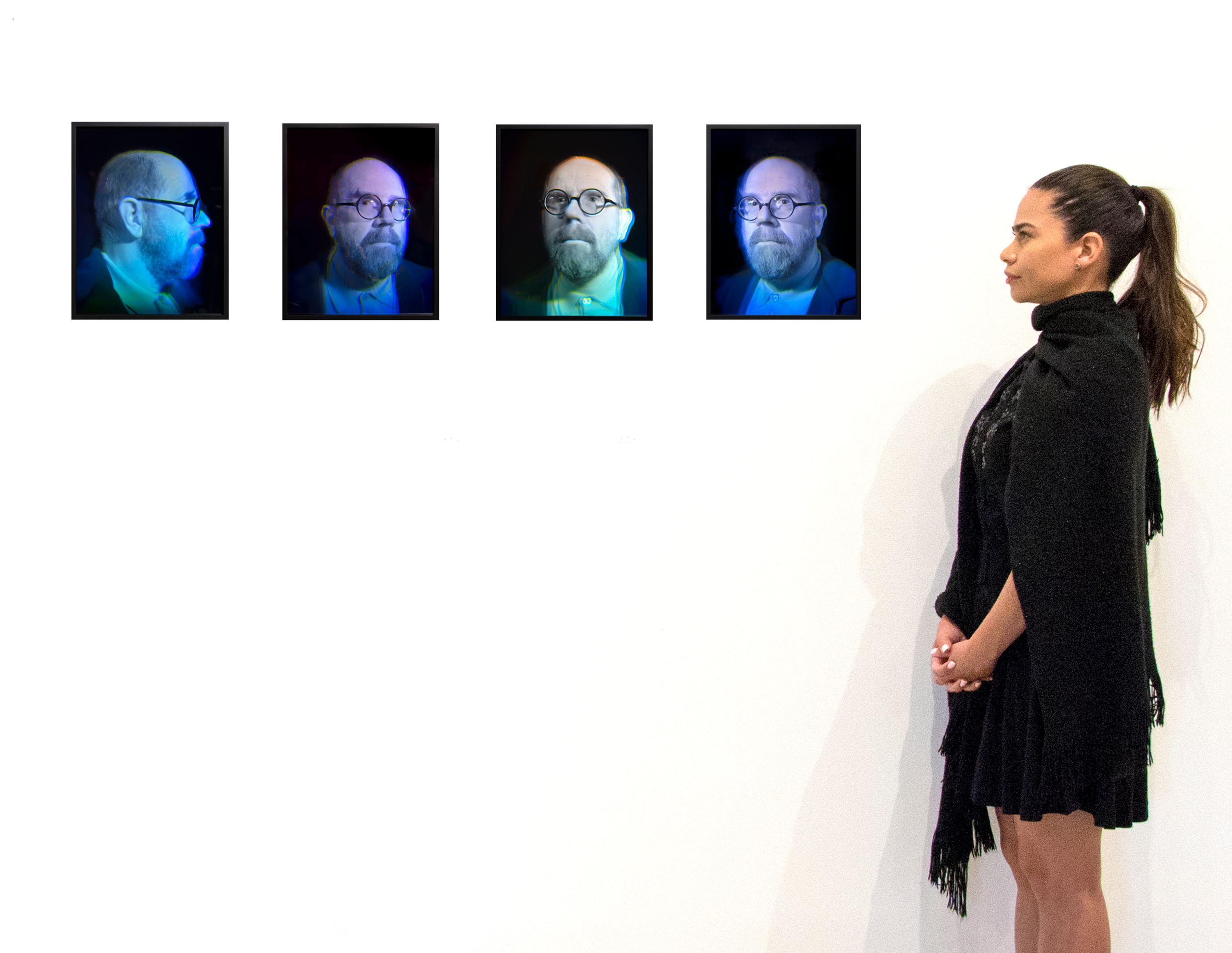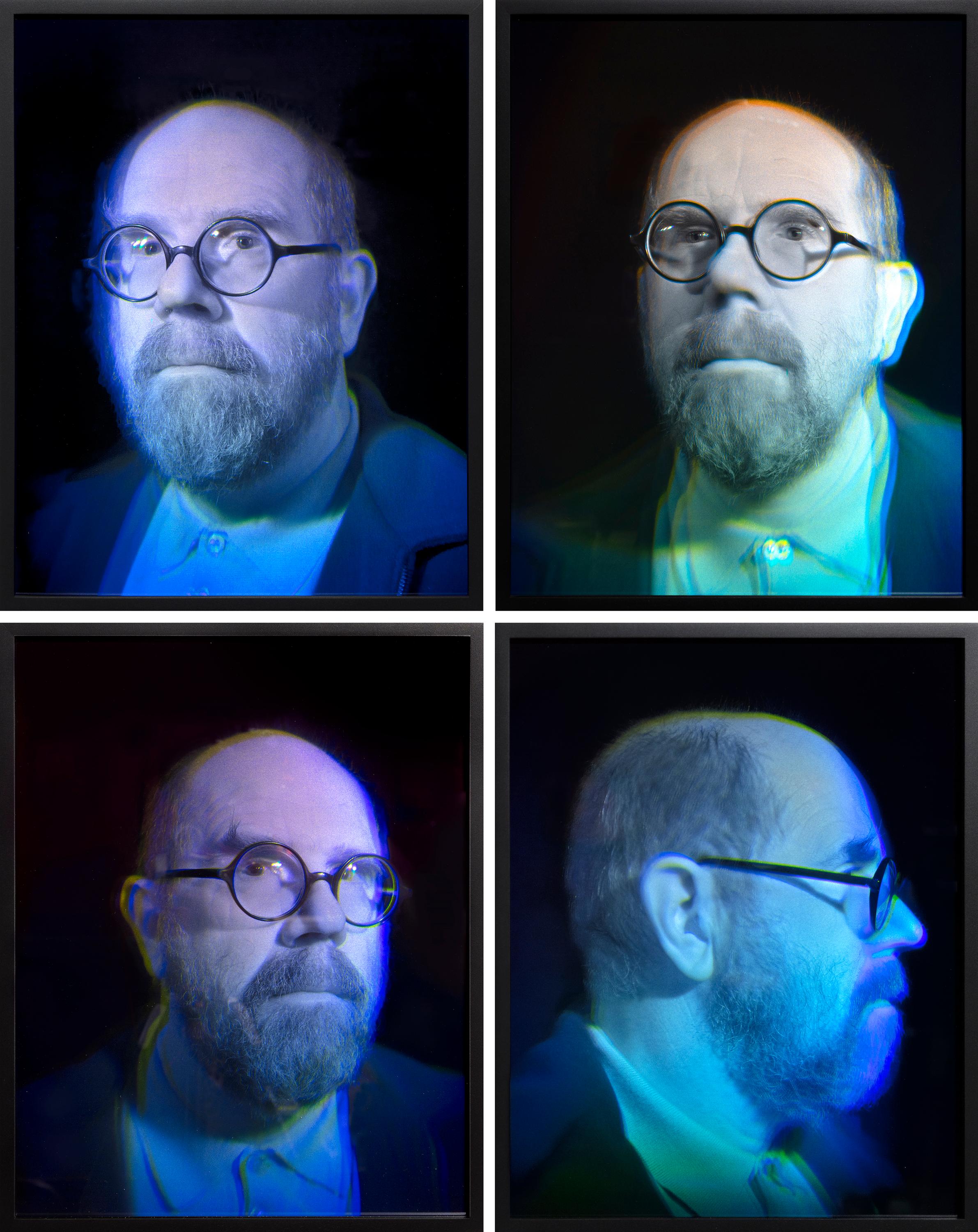Items Similar to Unframed Hand Painted Buddha Thangka on Canvas with 24K Gold
Video Loading
Want more images or videos?
Request additional images or videos from the seller
UnknownUnframed Hand Painted Buddha Thangka on Canvas with 24K Gold1988
1988
About the Item
Thangka painting dates back to 7th century after Buddhism was spread in the Himalayan region (Nepal, Bhutan, Tibet and Northern India). In Eastern world Thangka is considered to be a part of Abhi-Dharma which means "The Art of Enlightenment". It is a scroll painting on canvas. Over the centuries Thangkas gradually acquired the status of collectible fine art from a purely spiritual art. Due to international museum shows and popularity of Buddhism Thangkas in particular are gaining a place on the art world's radar screen. The beauty and power of these intricate paintings are strong enough to stand up aesthetically for any viewer.
This thangka painting depicts Gautama Buddha in the most common iconography. Buddha is seated in the center of the scene in lotus pose, meditating on top of a moon disc and a lotus throne.
He carries an alms bowl in his left hand, while his right hand is pointing toward the earth in "Bhumi-Sparsha" mudra or earth touching pose. This gesture is representative of the moment that Buddha attains enlightenment.
The robe is beautifully decorated with intricate golden patterns.
Peonies, plants and other flowers surrounds the throne and offerings are depicted in the foreground. Composing the rest of the scene with several other buddha figures in various forms makes this Thangka a unique and outstanding.
A booklet on "procedure of making a thangka " will be provided with the purchase.
- Creation Year:1988
- Dimensions:Height: 18.5 in (46.99 cm)Width: 14 in (35.56 cm)
- Medium:
- Period:
- Condition:
- Gallery Location:TRUMBULL, CT
- Reference Number:1stDibs: LU1426211940432
About the Seller
5.0
Vetted Seller
These experienced sellers undergo a comprehensive evaluation by our team of in-house experts.
Established in 2014
1stDibs seller since 2020
12 sales on 1stDibs
- ShippingRetrieving quote...Ships From: TRUMBULL, CT
- Return PolicyA return for this item may be initiated within 3 days of delivery.
More From This SellerView All
- Framed Hand Painted Life History of Buddha Thangka on Canvas 24k GoldLocated in TRUMBULL, CTThis professionally framed "Life History of Buddha" thangka is hand painted on canvas with 24K real gold. Shimmering gold brush strokes and earthy color palette with illustrative wo...Category
1990s Other Art Style More Art
MaterialsCanvas, Mixed Media
- Gold Bajra Mandala ThangkaLocated in TRUMBULL, CTGold Bajra Mandala Thangka is one of a kind 100% hand painted on canvas with center figurine of Green tara which is symbol of PosetiveCategory
20th Century Symbolist More Art
MaterialsMixed Media
- Shakya Muni Buddha Thangka Painting with 24K Real GoldLocated in TRUMBULL, CTHand painted thangka on canvas with a touch of real gold. In this thangka Buddha is meditating on a lotus throne. In the background snow capped mo...Category
21st Century and Contemporary Other Art Style More Art
MaterialsMixed Media
- 19th Century Ten Mandala 24 Carat Gold painted Thangka on canvasLocated in TRUMBULL, CTTen Mandala 24 carat real gold painted on canvas is a one of a kind Thangka Painting. The thangka is ritual Buddhist Painting use to pray or Meditation purpose. Several steps are inv...Category
19th Century Symbolist More Art
MaterialsMixed Media
- Unframed Hand Painted Wheel of Life Thangka on Canvas with 24K GoldLocated in TRUMBULL, CTThangka painting dates back to 7th century after Buddhism was spread in the Himalayan region (Nepal, Bhutan, Tibet and Northern India). In Eastern world Thangka is considered to be a...Category
Late 20th Century Other Art Style More Art
MaterialsMixed Media
- Unframed Hand Painted Vajrapani Thangka on Canvas with 24K GoldLocated in TRUMBULL, CTThangka painting dates back to 7th century after Buddhism was spread in the Himalayan region (Nepal, Bhutan, Tibet and Northern India). In Eastern world Thangka is considered to be a part of Abhi-Dharma which means "The Art of Enlightenment". It is a scroll painting on canvas. Over the centuries Thangkas gradually acquired the status of collectible fine art from a purely spiritual art. Due to international museum shows and popularity of Buddhism Thangkas in particular are gaining a place on the art world's radar screen. The beauty and power of these intricate paintings are strong enough to stand up aesthetically for any viewer. This unframed hand painted thangka on canvas...Category
Late 20th Century Other Art Style More Art
MaterialsMixed Media
You May Also Like
- Tomatoes - Still Life, Fruit & Vegetables, South Africa, RealisticBy Mark MidgleyLocated in Knowle Lane, CranleighTomatoes by Mark Midgley. Original Oil on Canvas. The Cape Town artist, Mark Midgley, is originally from Leeds in the UK. He moved to South Africa in 1979, where he started a silk...Category
Early 2000s Photorealist Still-life Paintings
MaterialsMixed Media, Oil
- Holocaust Remembrance Logo Pin and PendantBy Judy ChicagoLocated in New York, NYJudy Chicago Logo Pin and Pendant, 1993 Enameled pin with pendant loop in original presentation box 2 1/2 × 2 1/2 × 1/5 inches Judy Chicago's incised name and date on the verso Comes in original presentation gift box Poignant enameled Holocaust Project Logo pin & pendant based on the logo designed by Judy Chicago for the Holocaust Project: From Darkness into Light More about pioneering artist Judy Chicago Judy Chicago (born Judith Sylvia Cohen; July 20, 1939) is an American feminist artist, art educator, and writer known for her large collaborative art installation pieces about birth and creation images, which examine the role of women in history and culture. During the 1970s, Chicago founded the first feminist art program in the United States at California State University, Fresno (formerly Fresno State College) which acted as a catalyst for feminist art and art education during the 1970s. Her inclusion in hundreds of publications in various areas of the world showcases her influence in the worldwide art community. Additionally, many of her books have been published in other countries, making her work more accessible to international readers. Chicago's work incorporates a variety of artistic skills, such as needlework, counterbalanced with skills such as welding and pyrotechnics. Chicago's most well known work is The Dinner Party, which is permanently installed in the Elizabeth A. Sackler Center for Feminist Art at the Brooklyn Museum. The Dinner Party celebrates the accomplishments of women throughout history and is widely regarded as the first epic feminist artwork. Other notable art projects by Chicago include International Honor Quilt, Birth Project, Powerplay, and The Holocaust Project. She is represented by Jessica Silverman...Category
1990s Abstract Geometric Mixed Media
MaterialsMetal, Enamel
- Fire Light : floor lampLocated in New York, NYThis beautiful modern lamp by contemporary artist Susan Woods is both a unique piece of art and a functioning design element. The lamp is made out of con...Category
2010s Modern More Art
MaterialsSteel, Iron
- Self PortraitLocated in Palm Desert, CAA set of four (4) holograms by Chuck Close. "Self Portrait" is a set of four (4) self portraits in blues and blacks by contemporary American artist Chuck Close. The work is numbered CC(13)4 and is editioned 13/23 with 2 PPs. The holograms are unsigned. The dimensions listed are for each of the four (4) holograms, and they are framed separately. Chuck Close is an American painter and photographer who achieved fame as a photorealist, through his massive-scale portraits. Though a catastrophic spinal artery collapse in 1988 left him severely paralyzed, he has continued to paint and produce work that remains sought after by museums and collectors. Throughout his career, Close has endeavored to expand his contribution to portraiture through the mastery of such varied drawing and painting techniques as ink, graphite, pastel, watercolor, conte´ crayon, finger painting, and stamp-pad ink on paper; printmaking techniques, such as Mezzotint, etching, woodcuts, linocuts, and silkscreens; as well as handmade paper collage, Polaroid photographs, Daguerreotypes, and Jacquard tapestries. His early airbrush techniques inspired the development of the ink jet printer. Working from a gridded photograph, Close builds his images by applying one careful stroke after another in multi-colors or grayscale. He works methodically, starting his loose but regular grid from the left hand corner of the canvas. His works are generally larger than life and highly focused. Close has been a printmaker throughout his career, with most of his prints published by Pace Editions, New York. He made his first serious foray into print making in 1972, when he moved himself and family to San Francisco to work on a mezzotint at Crown Point Press for a three-month residency. In 1986 he went to Kyoto to work with Tadashi Toda, a highly respected woodblock printer. In 1995, curator Colin Westerbeck used a grant from the Lannan Foundation to bring Close together with Grant Romer, director of conservation at the George Eastman House. The artist has also continued to explore difficult photographic processes such as daguerreotype in collaboration with Jerry Spagnoli and sophisticated modular/cell-based forms such as tapestry. Close’s photogravure portrait of artist Robert Rauschenberg, “Robert” (1998), appeared in a 2009 exhibition at the Heckscher Museum of Art in Huntington, New York, featuring prints from Universal Limited Art Editions. In the daguerreotype photographs, the background defines the limit of the image plane as well as the outline of the subject, with the inky pitch-black setting off the light, reflective quality of the subject’s face. Close’s wall- size tapestry portraits...Category
21st Century and Contemporary Contemporary More Art
MaterialsMixed Media
- Self PortraitBy Chuck CloseLocated in Palm Desert, CAA suite of four holograms by Chuck Close. "Self Portrait" is a contemporary artwork in a palette of blacks and blues by Chuck Close. Each piece measures 14 x 11 in. The work is editioned 16/23 with 2 PPs and is numbered CC(16)2. Chuck Close is an American painter and photographer who achieved fame as a photorealist, through his massive-scale portraits. Though a catastrophic spinal artery collapse in 1988 left him severely paralyzed, he has continued to paint and produce work that remains sought after by museums and collectors. Throughout his career, Close has endeavored to expand his contribution to portraiture through the mastery of such varied drawing and painting techniques as ink, graphite, pastel, watercolor, conte´ crayon, finger painting, and stamp-pad ink on paper; printmaking techniques, such as Mezzotint, etching, woodcuts, linocuts, and silkscreens; as well as handmade paper collage, Polaroid photographs, Daguerreotypes, and Jacquard tapestries. His early airbrush techniques inspired the development of the ink jet printer. Working from a gridded photograph, Close builds his images by applying one careful stroke after another in multi-colors or grayscale. He works methodically, starting his loose but regular grid from the left hand corner of the canvas. His works are generally larger than life and highly focused. Close has been a printmaker throughout his career, with most of his prints published by Pace Editions, New York. He made his first serious foray into print making in 1972, when he moved himself and family to San Francisco to work on a mezzotint at Crown Point Press for a three-month residency. In 1986 he went to Kyoto to work with Tadashi Toda, a highly respected woodblock printer. In 1995, curator Colin Westerbeck used a grant from the Lannan Foundation to bring Close together with Grant Romer, director of conservation at the George Eastman House. The artist has also continued to explore difficult photographic processes such as daguerreotype in collaboration with Jerry Spagnoli and sophisticated modular/cell-based forms such as tapestry. Close’s photogravure portrait of artist Robert Rauschenberg, “Robert” (1998), appeared in a 2009 exhibition at the Heckscher Museum of Art in Huntington, New York, featuring prints from Universal Limited Art Editions. In the daguerreotype photographs, the background defines the limit of the image plane as well as the outline of the subject, with the inky pitch-black setting off the light, reflective quality of the subject’s face. Close’s wall- size tapestry portraits...Category
20th Century Contemporary More Art
MaterialsMixed Media
- Svet IIBy Alexander LibermanLocated in Lawrence, NYWe are pleased to present this 1984 mixed media wall installation by acclaimed Russian-American modernist artist Alexander Liberman. Alexander Liberman led a dual life--as the the noted editorial director for Conde Nast publications for nearly 30 years and as an acclaimed minimalist sculptor and painter whose works were noted for their bright colors and large size. He was named editorial director in 1962; he had his first show, at Betty Parsons Gallery, in 1960. His works can be found in the collections of the Metropolitan Museum of Art, the Hirshorn Museum, the Guggenheim, the Tate, the Whitney, MOMA, LACMA and the Storm Art...Category
1980s Post-Modern More Art
MaterialsMixed Media
